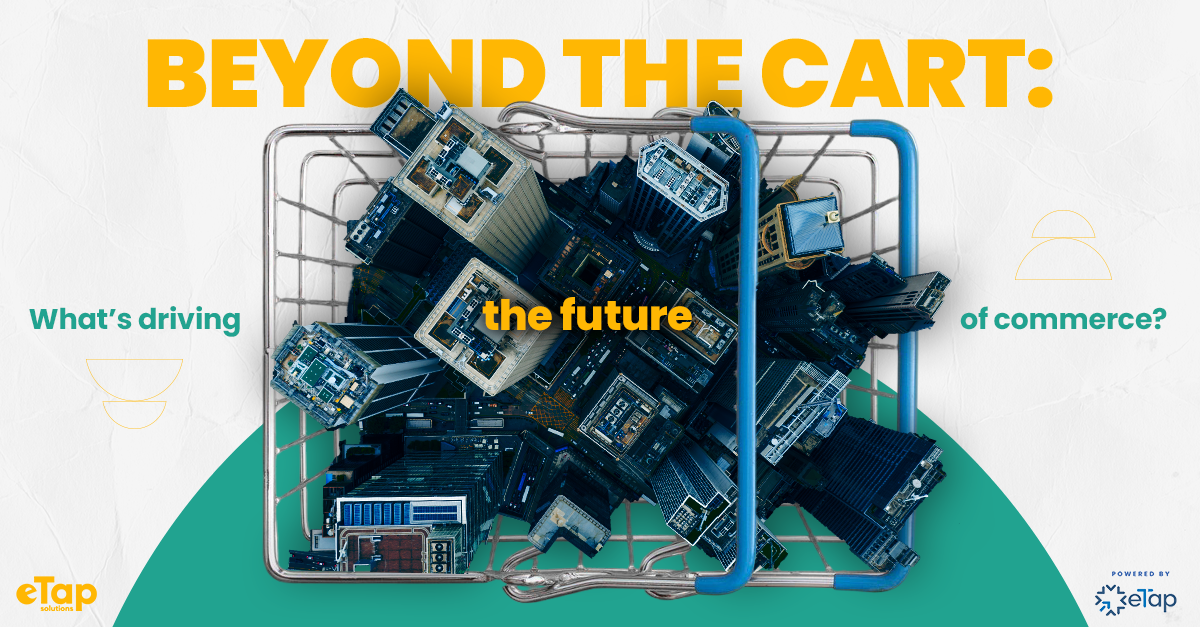Customers
Beyond the cart: what's driving the future of commerce?

With billions of people shopping worldwide, the world of commerce is bound to be dynamic and ever-changing.
Businesses know there are big prizes to be earned in e-commerce too, which explains why global e-commerce sales are forecast to hit $6.8 trillion in 2025.
Whether you're a global enterprise, a regional merchant, or a small local seller, understanding the emerging trends shaping commerce is key to long-term success. Here are the top trends redefining the future of commerce:
The game is about to get a lot more phygital
Phygital is a portmanteau of the words physical and digital, used to describe anything that blends a digital experience with a physical one. Some retailers, for example, will allow shoppers to order their products via app or website and then have them picked up at a brick-and-mortar location.
In retail especially, research from Zendesk suggests that a phygital approach offers several advantages. It enhances customer satisfaction through hyper-personalized interactions, often leading to improved Net Promoter Scores® (NPS). Satisfied customers are also more likely to return, strengthening brand loyalty.
For eTap, self-service kiosks extending access to e-wallets and digital services are an introductory way for retailers to go phygital. With more Filipinos using e-wallets as a primary mode of payment, these kiosks make it easier for customers to transact and for businesses to stay competitive.
Inflation puts a premium on loyalty
Anyone who has gone out in the past year can tell you: EVERYTHING has become more expensive. Between rising gas prices and price increases at the grocery aisle, inflation is hitting people’s wallets harder than ever, and it’s influencing shopping habits.
Thus loyalty programs are crucial, with businesses leveraging data to create tailored rewards programs. According to the 2025 Commerce Experience Report by NCR Voyix, about 70% of shoppers now avail of grocery store programs, while just over half are in fuel/convenience (54%) and restaurant (51%) programs.
Convenience stores are the new frontier
Filipinos aren’t new to going to convenience stores for some of their most basic needs. Filipinos are increasingly buying ready-to-eat food from convenience stores due to urban living, busy schedules, and long work hours.
To answer this growing need for more diverse offerings, many convenience stores in the Philippines have expanded even beyond even limited-service dining and ready-to-eat meal options. Davao Central Convenience Store, for example, houses eTap kiosks and offers shoppers a one-stop shop for everything from school supplies to personal care items.
Overall, retailers need to level up and be agile enough to meet evolving consumer preferences. Customers want phygital bridges, rewards for their loyalty, and more diverse offerings in-store.
Introducing self-service payment machines is one way to accomplish the above. Self-service payment machines, such as those provided by eTap Solutions powered by eTap Inc., act as phygital bridges by combining digital convenience with in-store access. They support loyalty programs (via raffles and other campaigns in eTap’s case), offer quick transactions, and expand available services, helping retailers meet demands for speed, rewards, and more diverse offerings.
Interested in placing an eTap kiosk right in your store? Reach out to the official eTap Solutions LinkedIn page or message Joe at joe@etapinc.com!
Article by Pancho Dizon
Graphic by Joshua Puig

